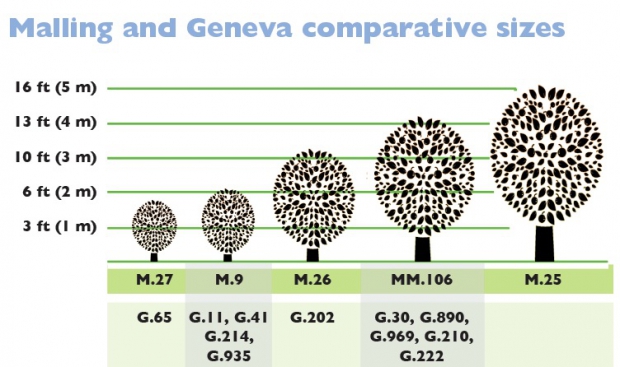
(Source: Dr. Terence Robinson, Cornell University)
The ideal rootstock for Honeycrisp is one that promotes moderate tree vigor along with good productivity, says Dr. Terence Robinson, horticulturist at Cornell University, New York.
Many growers who are using the precocious dwarfing Malling 9 or Budagovsky 9 rootstocks are having difficulty getting the trees to grow to fill their space, particularly if they crop the trees early.
B.9, though very productive, is very dwarfing and if growers use it, they should plant trees two feet apart or even less, Robinson suggests. It has the advantages of being less prone to biennial bearing and more winter hardy than other rootstocks.
Geneva 11 is not quite vigorous enough for Honeycrisp, but G.41 is a dwarfing rootstock that has enough horsepower to get Honeycrisp to grow if the trees are planted at a high density, he said. However, with Honeycrisp it has a brittle bud union that can easily break when the tree is small, so it is critical to tie trees to the trellis immediately after planting.
He believes that G.935 and G.214 have the right vigor for Honeycrisp along with high productivity.
“The key is to find a rootstock that in your soil and your climate has enough horsepower that you can get at least nine or ten feet in height by the end of the first year,” he said. “This will vary in different places of the country and with different systems.”
G.969 is an M.26-size rootstock that might be a perfect fit for Honeycrisp where more vigor is needed, Robinson said, though it’s not yet been tested in Washington. As with the medium-vigor Geneva rootstocks, he recommends planting trees three feet apart.
“When you pack it in at three feet, it’s going to be a fabulous one for Honeycrisp,” he said.






Leave A Comment